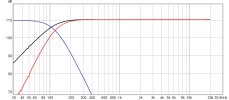Just got a new Denon. While waiting for Dirac (if it gets a correct implementato), I would be curious to try this.
How much does one lose in functionality through the iOS app? I have a 12.9" iPad with Bluetooth mouse and I would rather go that way, considering pricing and licensing.
Also, is there a good tutorial anywhere? I am familiari with REW but no expert. I have a Umik-1.
I have both. The IOS App is better than the "regular Audyssey", the one you find in the AVR. It is however not precise, trying to "draw" a curve with fingers or BT mouse is tedious and not reliable: You may or, may not find the proper settings. MultEQ-X PC app is at a different level, a much better and more powerful application. It does have a learning curve but is IMHO worth the bother and expense. I was against it in the beginning, but have come to see it as indispensable. I haven't used and, don't know much about DIRAC. I do know, however despite the buzz, that there is
no conclusive proof, that it is superior to Audyssey.
Currently and patiently working with MutEQ-X to fine-tune my system. I will post my REW measurements when done. I ran into a bizarre issue that I need to ascertain. It
seems that Audyssey doesn't work with all app or software inputs on my AVR, a Denon AVR-X3400H, it could be a fault on the AVR itself. Audyssey definitely works with Spotify and on movies from the Apple TV 4K connected via HDMI.. It, "seems" to have issues with Apple Airplay when using Apple Music.
I will look into this more.
Questions to the collective: How can one use REW with Apple Airplay? IOW sending the test tones via Airplay? Is this at all possible?
Peace.

